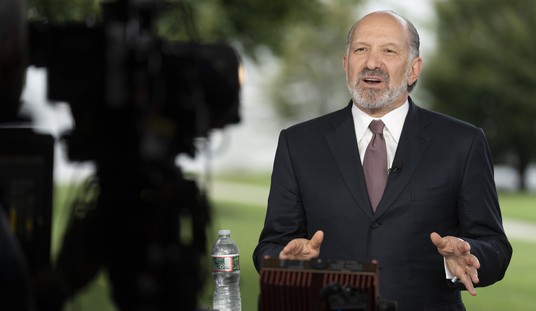With his gaunt saturnine looks, Leonard Nimoy was the unlikeliest of TV and movie superstars. Reading through the roles he played in the first 15 years of his acting career on his page at the IMDB, it’s immediately apparent that it was only through sheer dogged determination that he established a foothold as an actor in Hollywood. Nimoy started his career in the early 1950s with with walk-on parts in grade-z shlock such as Zombies of the Stratosphere, and appearing in TV guest star roles culminating as the heavy in the pilot for Get Smart. But his guest shot in a 1964 episode of an obscure NBC series about a young Marine called The Lieutenant that would send his career — and you know it’s only a matter of time before this pun — into orbit and far beyond:
Spotted by “Star Trek” creator Gene Roddenberry when he appeared on Roddenberry’s NBC Marine Corps. skein “The Lieutenant,” Nimoy was offered the role of Spock and co-starred in the 1965 “Star Trek” pilot “The Cage.” NBC execs liked the concept but thought the pilot too cerebral, so they ordered a second pilot of the Desilu production with some script and cast changes (only Nimoy made it through both pilots). The series finally bowed on the Peacock in the fall of 1966. After three seasons, it was canceled in 1969 but would go on to be a hit in syndication, spawning films and other TV iterations and gaining a huge following of fans known as Trekkers or Trekkies.
After the series wrapped, Nimoy joined the fourth season of spy series “Mission: Impossible” as master-of-disguise Paris, leaving after the fifth season. He went on to star in the 1971 Western “Catlow,” with Yul Brynner and Richard Crenna, and the 1978 remake of “Invasion of the Body Snatchers” with Donald Sutherland and Jeffrey Goldblum. The actor also made a series of TV films throughout the ’70s and received an Emmy nomination in 1982 for his role as Golda Meir’s husband in telepic “A Woman Called Golda.”
Also during the ’70s, Nimoy narrated the docuseries “In Search of …,” which investigated unexplained events, paranormal phenomena and urban legends long before these matters become the common fodder of pop culture.
Then the siren call of “Star Trek” beckoned again and Nimoy returned to the role of Mr. Spock for 1979’s “Star Trek: The Motion Picture.” The film opened well at the box office, and though not well reviewed, it did spawn enough interest for Paramount to greenlight sequels that would continue into the 1990s: “The Wrath of Khan” (1982), “The Search for Spock” (1984), “The Voyage Home” (1986), “The Final Frontier” (1989) and “The Undiscovered Country” (1991). Nimoy was in all of them, albeit briefly in “The Search for Spock.”
When it was obvious before its last season began shooting in the summer of 1968 that NBC had no interest in keeping Star Trek on the air, Gene Roddenberry effectively walked away from the series, keeping his executive producer title and paycheck, but using his time to write a screenplay and prepare his escape route. As a result, the last of the show was a campy mess deserving of its network euthanasia — but then something miraculous happened: man landed on the moon. And suddenly Star Trek, which at least until its last season, took its science fiction seriously began to look remarkably prescient. As a result, the show was rewarded with something unprecedented in television: a fan base that grew after a series was cancelled by a TV network, as the Kaiser syndicated television network ran the shows in the afternoon daily throughout the 1970s.
And then George Lucas, himself a fan of the original series, came up with this cool idea for a big screen space opera. Suddenly, the little series that Paramount inherited when they bought Lucille Ball’s Desilu production company in 1968 seemed like it incredible potential for a movie of its own.
And how.
The bedrock of the series was Nimoy, who took the character seriously, inventing many of his famous traits — the neck pinch, the V-for Vulcan hand gesture, and over time, his carefully modulated voice. It’s a remarkable performance, and Nimoy deserved the millions that Star Trek brought him, but it made watching Nimoy in other series a bit difficult. A few years ago, when I went through a jag of binge-watching Mission: Impossible on Netflix, I was struck by how strange it felt watching Nimoy take over Martin Landau’s man of a 1000 faces character. I dubbed a sort of “reverse uncanny valley effect,” from the term robotics designers use to describe that paradox that the more a robot looks human, the creepier it appears. Nimoy was so brilliant at developing a controlled, seemingly non-emotional alien, that called upon to play a campy, over-emoting character on Mission: Impossible, he was near impossible to watch. It didn’t help matters that like Star Trek’s final season, by the time Nimoy appeared on Mission: Impossible, it too was collectively phoning it in, with much of its original writing and production crew having moved on to other series.
Fortunately, by the end of the 1970s, Nimoy was back on the Paramount lot, playing the character that made him famous, and giving us all something to look forward to every few years at the summer box office.
A decade ago when James Doohan died, James Lileks wrote, “a hundred years from now, no one will remember Brad Pitt. But they’ll have a picture of Scotty taped up in the break room off the moon shuttle.” It’s not quite the same methods Spock employed in the second and third Star Trek movies, but Nimoy’s immortality is similarly assured.
To prove it, I won’t end this post with Spock’s legendary catchphrase, but it’s only because we all have it memorized — and we’re all saying it right now.
Update: Since I mentioned Nimoy’s appearance on The Lieutenant, here’s a YouTube clip of him alongside Gary Lockwood and Majel Barrett, the future Mrs. Roddenberry, in his very non-Spock-like role as a Hollywood director planning a film about the Corps:
[jwplayer player=”1″ mediaid=”79048″]










Join the conversation as a VIP Member